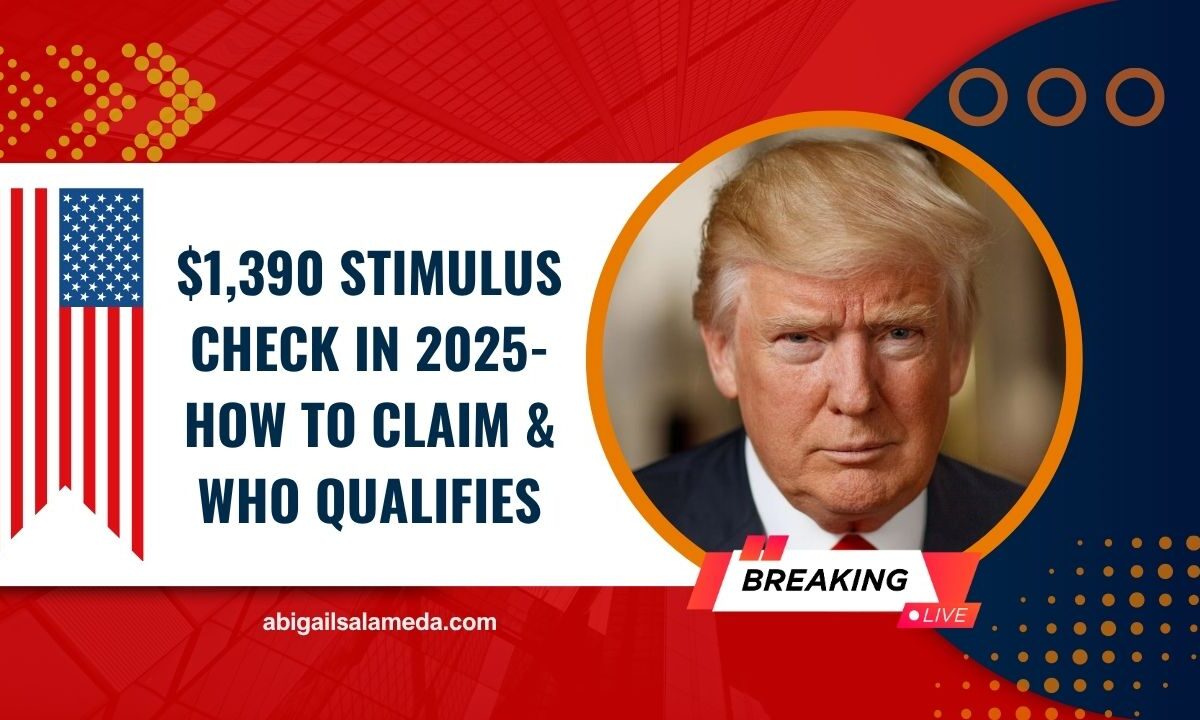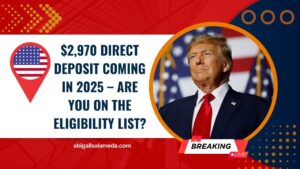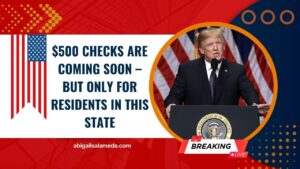As inflation continues to impact daily living costs, the U.S. government has introduced a $1,390 stimulus check in 2025 to support low- and middle-income Americans.
This tax-free financial relief is aimed at helping citizens cover necessities like rent, groceries, utilities, and healthcare.
Here’s everything you need to know about the eligibility criteria, payment timeline, and how to claim your check.
Who Is Eligible for the $1,390 Stimulus Check in 2025?
Like other government relief programs, eligibility for the $1,390 payout is mostly determined by income. People who make less than the following amounts will probably be eligible:
| Category | Income Limit |
|---|---|
| Single Tax Filers | Up to $75,000 |
| Married Couples (Filing Jointly) | Up to $150,000 |
| Head of Household | Up to $112,500 |
Additionally, automatic eligibility applies to:
- Social Security beneficiaries (SSI, SSDI, Retirement)
- VA and Railroad Retirement beneficiaries
- Families with qualifying dependents (may receive extra per child)
- Individuals who previously received stimulus and whose income hasn’t changed
You may still be eligible through the IRS Non-Filer Tool if you don’t fit into any of these categories, haven’t filed taxes, or don’t receive any benefits.
When Will the $1,390 Stimulus Check Be Sent?
Although no official date has been confirmed, mid-summer 2025 is the anticipated distribution window. The IRS and related agencies are currently working on finalizing logistics.
Here’s how you may receive your payment:
| Payment Method | Details |
|---|---|
| Direct Deposit | Fastest method; if your bank info is with IRS or SSA |
| Paper Check | Mailed to your address if no direct deposit info is available |
| EIP Debit Card | Some may receive payment through a prepaid debit card |
Do You Need to Apply for the $1,390 Stimulus Check?
In most cases, no application is required if:
- You’ve recently filed your federal taxes
- You’re already receiving Social Security, SSI, or SSDI benefits
| Situation | Application Required? |
|---|---|
| Filed recent taxes | ❌ No |
| Receiving SSA/SSI/SSDI | ❌ No |
| Neither filed taxes nor get benefits | ✅ Yes (Use Non-Filer Tool) |
Is the $1,390 Stimulus Check Taxable?
No, this check is 100% tax-free, just like earlier stimulus rounds. It will not count as income for benefit programs like:
- Medicaid
- SNAP (Food Stamps)
- Housing assistance
This ensures the payment does not interfere with your existing government aid.
How Should You Use This Money?
Although there are no limitations, the government advises people to make prudent use of this stimulus. Among the suggested uses are:
- Paying rent or home mortgage
- Covering utility bills (electricity, gas, water)
- Childcare or education expenses
- Groceries and medications
- Debt repayments (credit cards or loans)
Will There Be More Stimulus Checks in 2025?
While no new checks are confirmed yet, experts suggest that further stimulus could be considered if economic challenges worsen. The government is monitoring inflation and recession indicators to decide on future support.
Public Reaction
This stimulus has been welcomed nationwide, particularly by:
- Fixed-income retirees
- Disabled individuals
- Single-parent households
Past relief payments prevented evictions, debt accumulation, and missed utility payments. Many hope the 2025 payment will have the same positive impact.
The $1,390 stimulus check in 2025 represents a crucial step in supporting Americans navigating inflation and financial hardship.
If you meet the income or benefits eligibility, be sure to check the IRS portal, keep your bank details updated, and monitor your mail for any updates.
This isn’t just another check—it’s a chance to catch up, stay afloat, and make your everyday expenses more manageable.
FAQs
Will the $1,390 stimulus check affect my other benefits?
No, the payment is tax-free and does not count as income for federal aid programs.
What if I didn’t file taxes or receive Social Security?
You may still qualify by using the IRS Non-Filer Tool once it becomes available for 2025.
Can I track my stimulus payment status?
Yes, the IRS “Get My Payment” tool will allow you to check eligibility and track your payment status.




